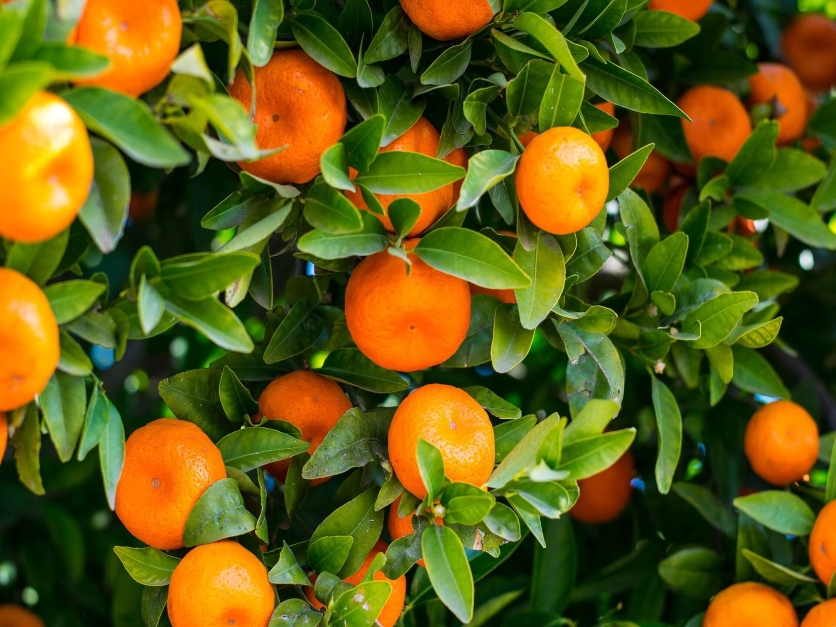Citrus growers are pleased but environmental groups are concerned about the Environmental Protection Agency’s approval of aldicarb for use on oranges and grapefruit in Florida to combat citrus greening, which has devastated the industry in the state since it was first identified in 2005.
The decision came about a week before the Biden administration took office and only about six weeks after EPA had put its proposal out for public comment.
Nathan Donley, senior scientist with the Center for Biological Diversity, said EPA moved with “lightning speed. They approved it six days after the comment period ended — I've honestly never seen EPA move that fast.” He contends EPA could not have adequately considered the comments submitted in that amount of time.
CBD and other environmental groups have criticized the decision, saying it will put both workers and the environment at risk, but EPA, responding to comments on the proposed use, said “dietary and drinking water exposures resulting from use of the pesticide are sufficiently low that there are no aggregate risk concerns. Also, significant personal protective equipment (PPE) or engineering controls are required to limit risks to agricultural workers.”
“Overall, it’s good news, and I really don’t think it’s going to represent any problems with people or the environment,” grower and consultant Pete Spyke of Arapaho Citrus Management said, citing experience growers had using it for decades before it was pulled from the market for use on citrus and potatoes under an agreement between Bayer CropScience and EPA in 2010.
At the time, EPA said a risk assessment had shown that aldicarb, sold under the brand name Temik, “no longer meets our rigorous food safety standards and may pose unacceptable dietary risks, especially to infants and young children.”
However, EPA continued to allow use of the product on some crops so long as mitigation measures were in place. Bayer nonetheless decided to voluntarily cancel all remaining uses, leaving the door open for North Carolina company AgLogic, which received approval to market a new aldicarb product, Meymik, on peanuts, cotton, sugar beets, dry beans, soybeans and sweet potatoes in certain states.
EPA is limiting the use of the product on citrus in Florida to 2.5 million pounds annually (about 100,000 acres) and said in response to comments on the proposal that capping the amount, along with “label mitigation requiring soil incorporation at greater than 3 inches and minimum 500-foot drinking water well set-backs” reduces risks enough to allow Meymik to be used safely.
The product is being conditionally registered, with AgLogic required to submit additional data on the risk to bees. “Aldicarb is highly toxic to bees on an acute contact basis,” EPA said, but added that “contact exposure and risk are not expected for honey bees for the proposed uses on oranges and grapefruit since the pesticide granules will be incorporated into the soil.”
“It’s safe to use as directed,” says Antoine Puech, managing member and principal at AgLogic. Puech says the company’s stewardship program requires the product only be sold to restricted-use pesticide license holders and that the state — which still has to make a decision on its use — issuing permits to each end-user before it’s applied.
In addition, Meymik will not be applied in certain soils that are more porous, he said, limiting its use.
Environmental groups, however, criticized the decision. The Center for Biological Diversity noted that EPA said in its ecological risk assessment that a bird or mammal can die from eating a single granule of aldicarb. “The agency also estimated use of aldicarb could expose bees to 76 times the amount of the pesticide known to cause harm,” CBD said.
As for whether a lawsuit is in the works, Donley, the CBD scientist said, “We are certainly weighing our options, but it's still too soon to know exactly what we're going to do about it.”

Nathan Donley, Center for Biological Diversity
Given its toxicity and the fact that it’s banned in more than 100 countries, aldicarb “really should not be used at any level,” Donley said.
Karen McCormack, who used to work in EPA’s Office of Pesticide Programs and raised the alarm with environmental groups when she saw EPA was moving to approve aldicarb in Florida, said numerous other products are registered for aldicarb and that EPA itself acknowledged in its benefits assessment that aldicarb will not completely control the psyllid.
Interested in more news on farm programs, trade and rural issues? Sign up for a four-week free trial to Agri-Pulse. You’ll receive our content - absolutely free - during the trial period.
Puech, however, says there’s plenty of data showing the effectiveness of aldicarb, pointing to comments filed by the Florida Fruit & Vegetable Association.
“Historical research has shown that net returns for mature citrus trees that receive an aldicarb application can be as much as $500 greater per acre (± 25%) than net returns for identical acreage that uses alternative pest control options,” FFVA said in its Jan. 4 comments. “Also, based on grove historical tree reset data, it has been shown that following an application of aldicarb, the resulting increased yields for 3-year-old trees more than covered the additional cost of applying the aldicarb.”
Florida citrus growers pushed hard for the approval, meeting in Washington in October with EPA Administrator Andrew Wheeler, where, FFVA Director of Science and Regulatory Affairs Mike Aerts told citrusindustry.net, “The management opportunities of the product well beyond the Asian citrus psyllid were brought out, such as the material’s capabilities in managing multiple species of nematodes, rust mites, mealybugs, etc., and the product’s historical abilities to increase various tree vigor components.”
Spyke said aldicarb will not solve the citrus greening problem in Florida but “it’s another tool in the toolbox” that, when used according to the label, should not cause environmental or human health issues.
He cautioned, however, that aldicarb needs to be used in rotation with the other products to reduce the potential for resistance.
For more news, go to www.Agri-Pulse.com.


